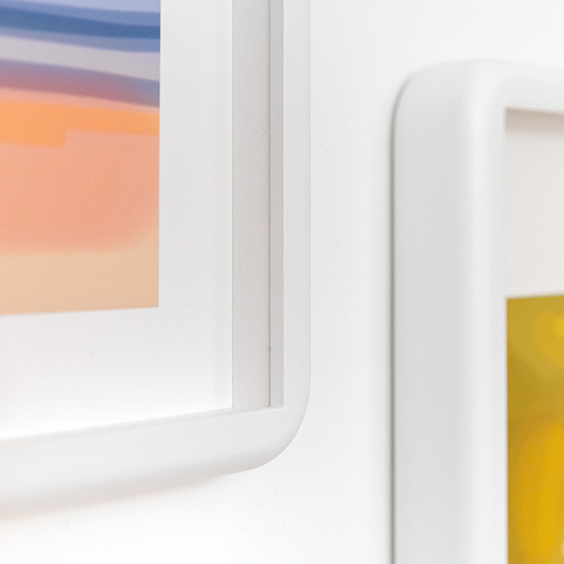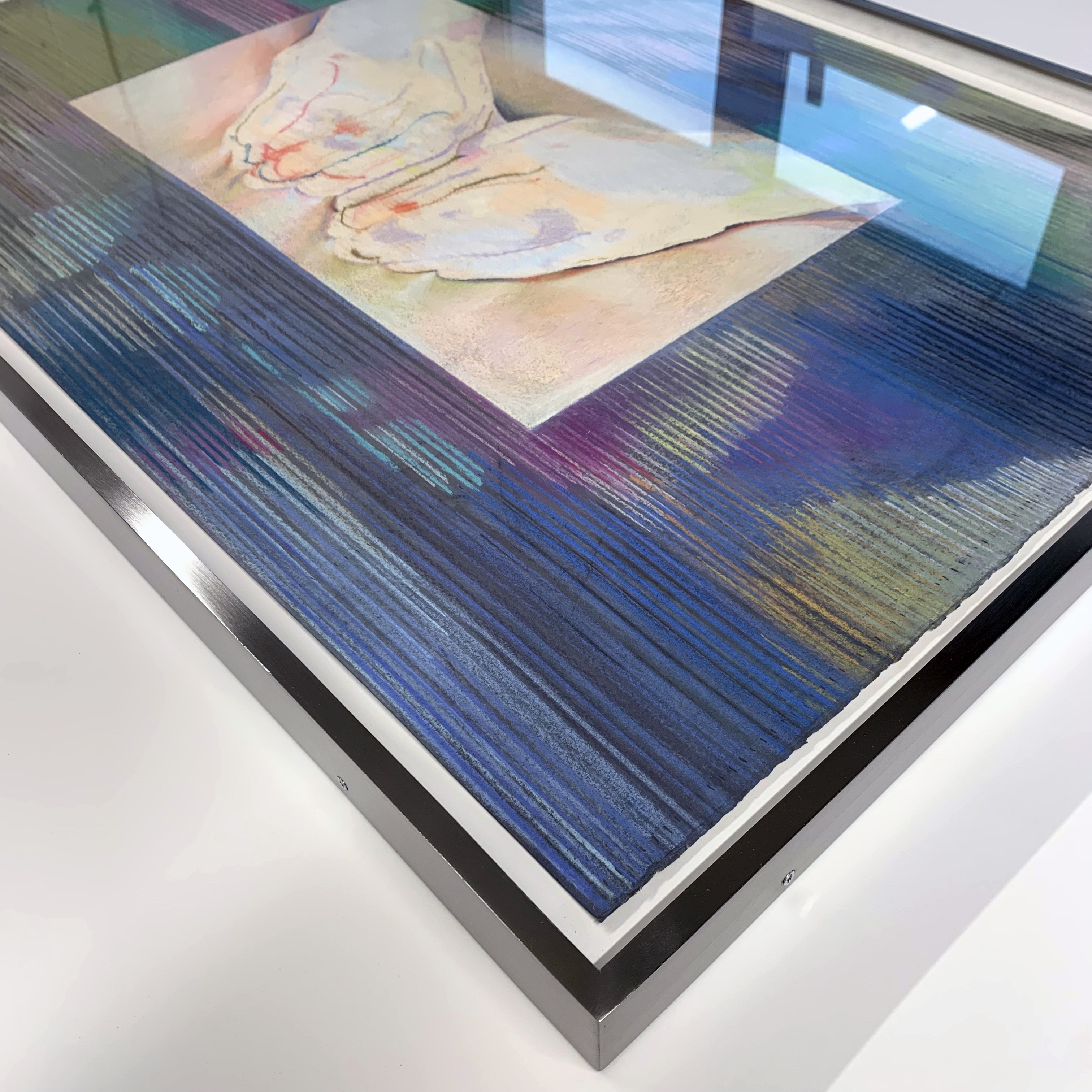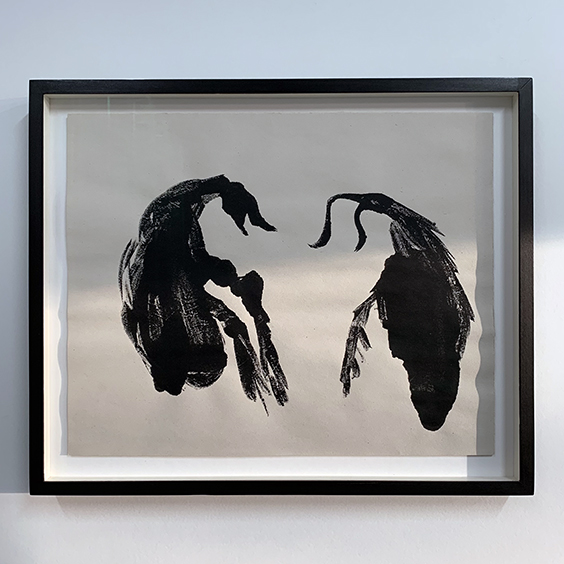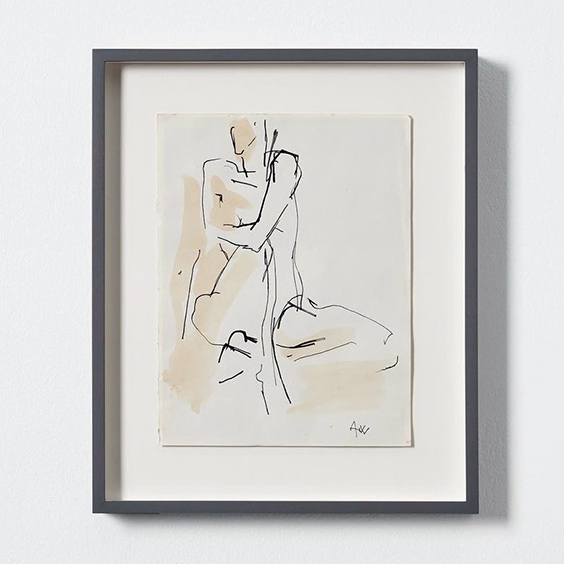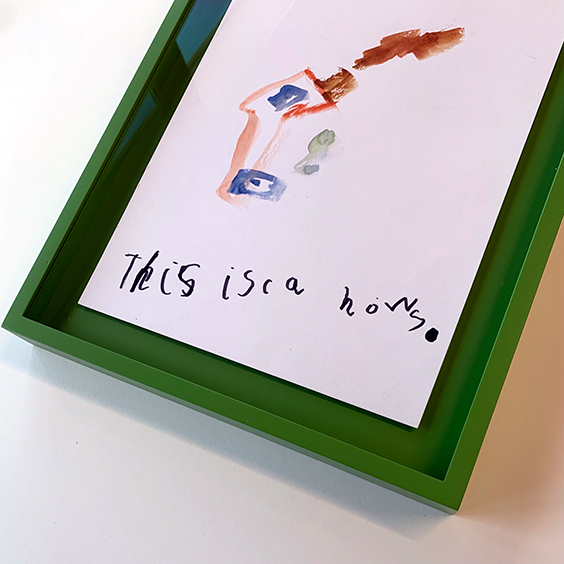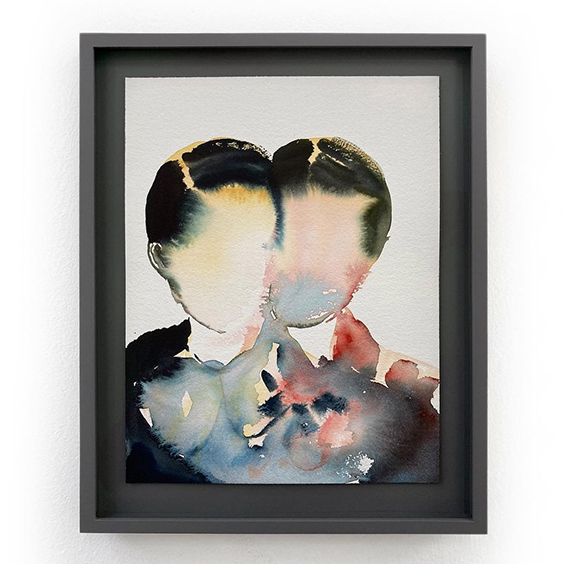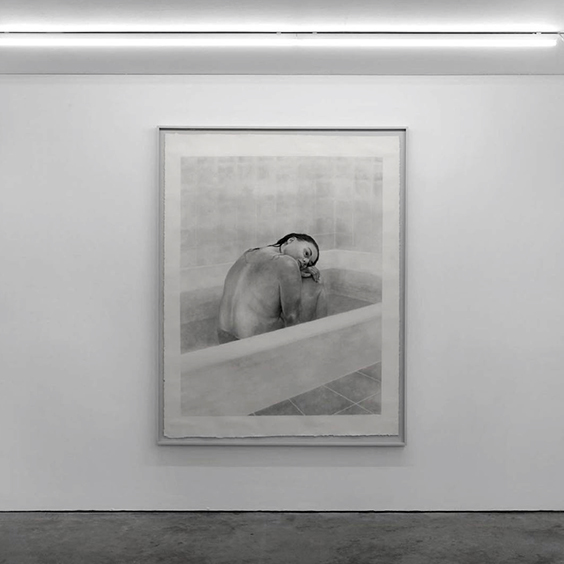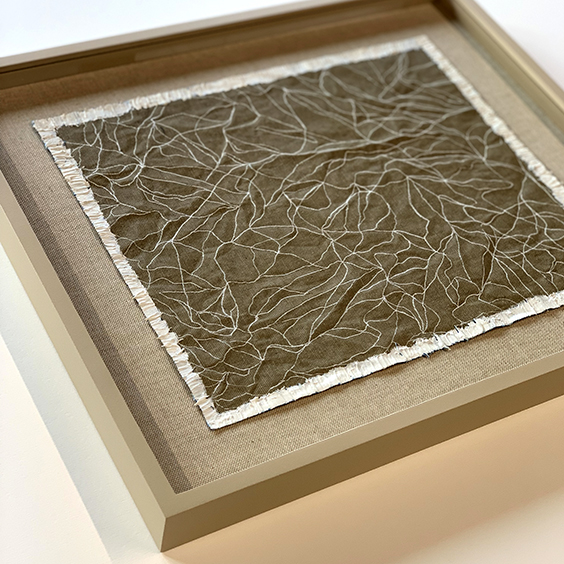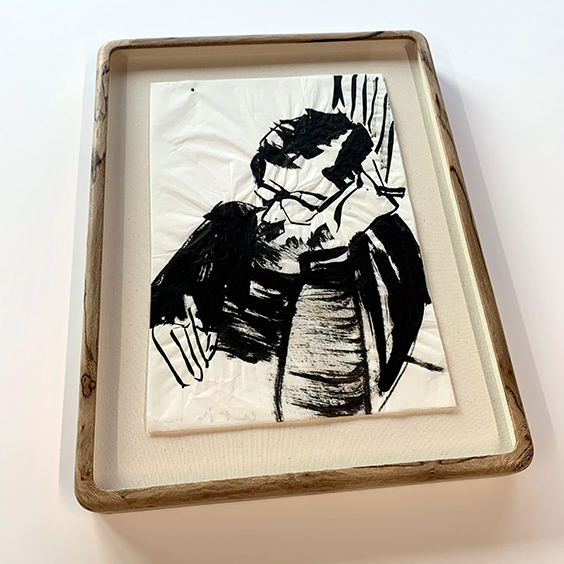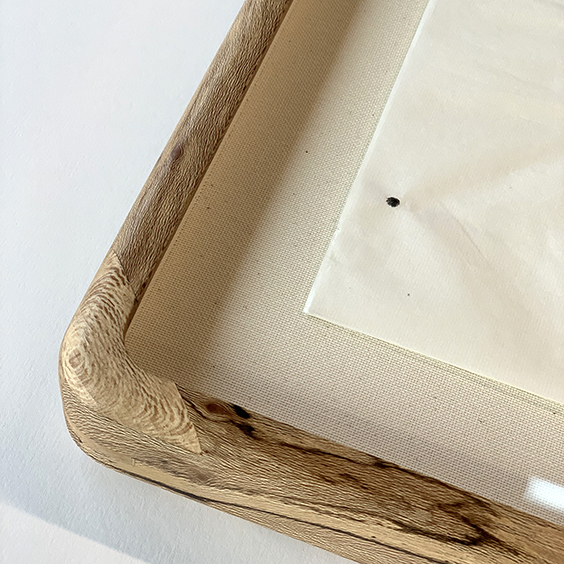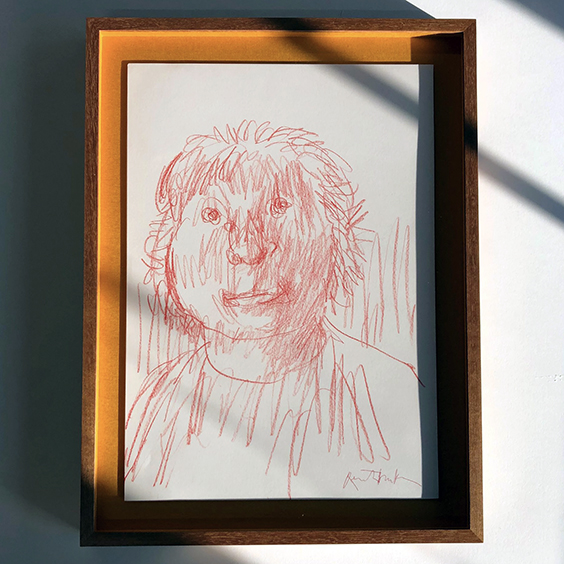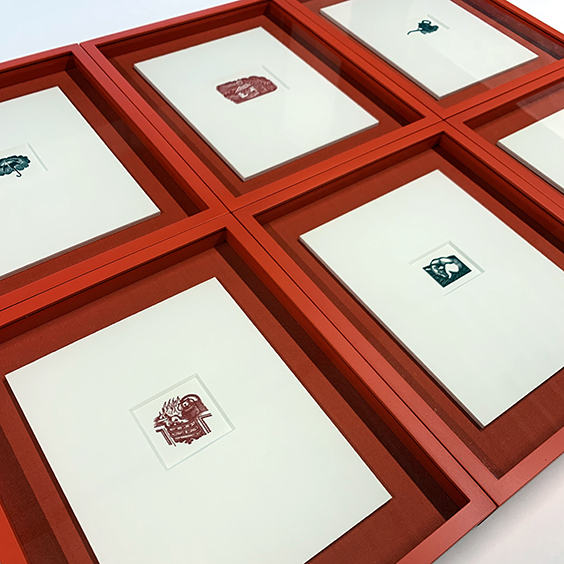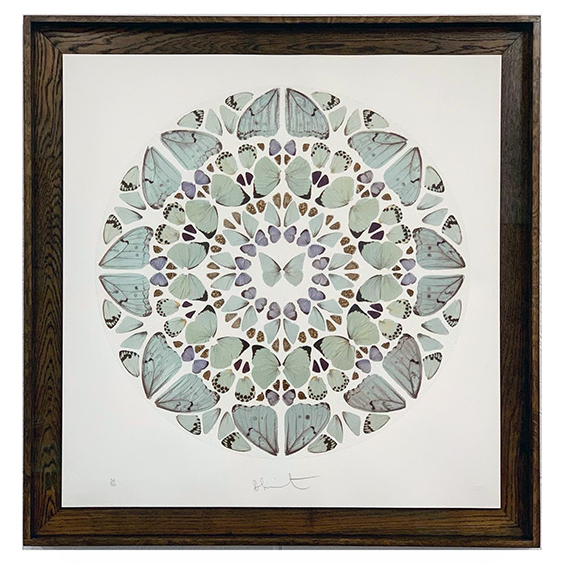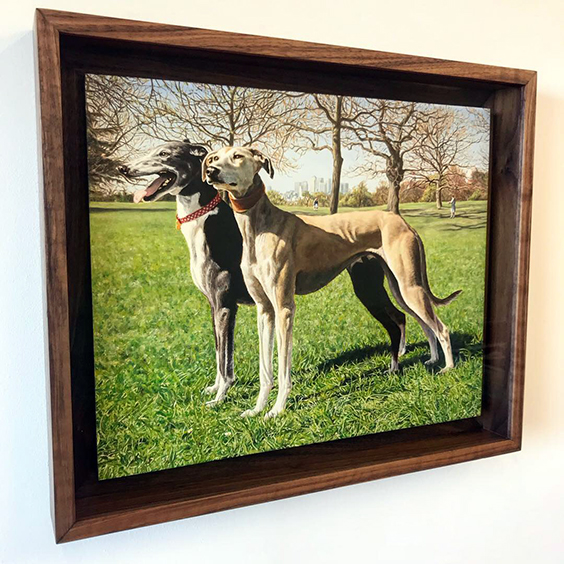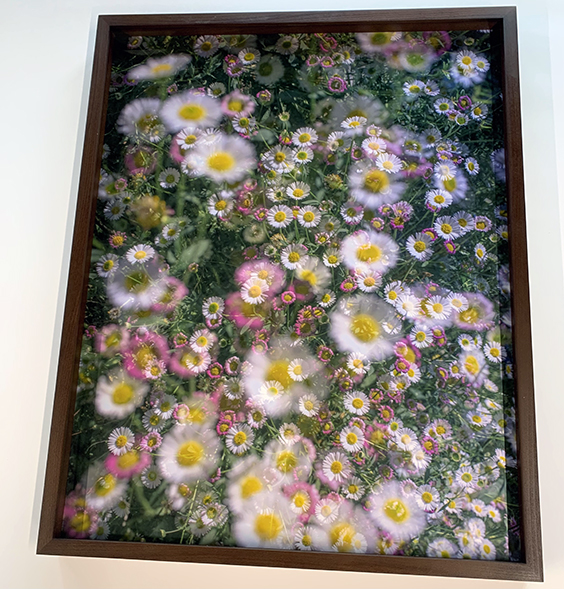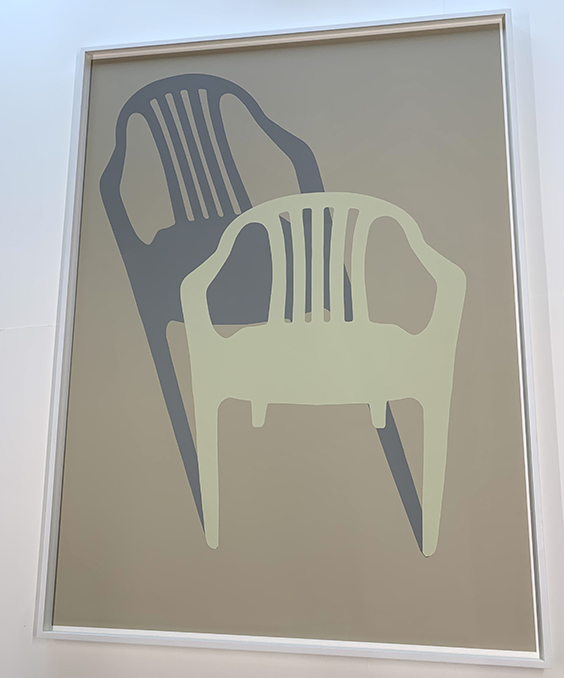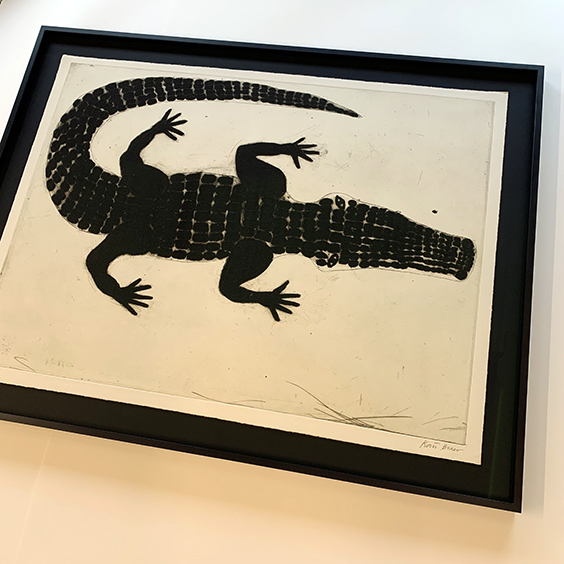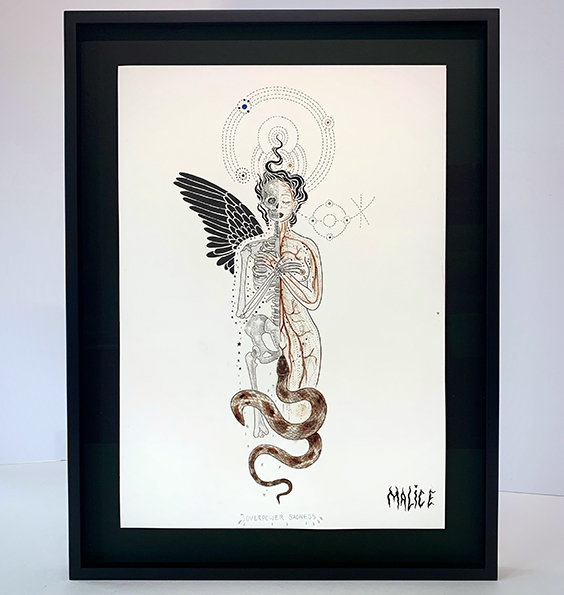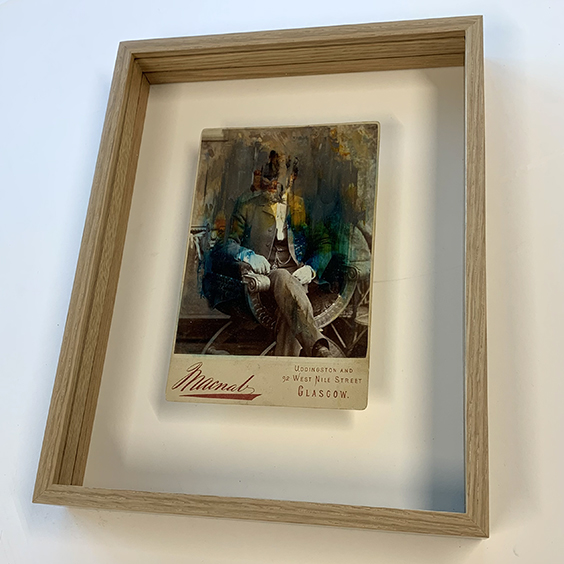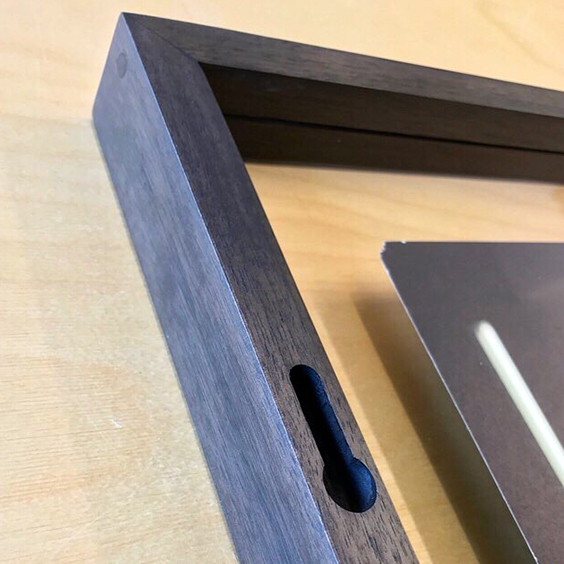Box Frames
1. Box Frames
We use 'box frame' to describe any frame with internal depth where the glazing is raised away from the surface of the artwork by a fillet / spacer hidden in the rebate.
Because the entirity of the work is often shown, the maker's handling marks remain visible and so express an object quality as well as a faithful unobstructed view of the work.
Box frames can also be very effective fitted directly to the edge, particularly with photography and graphic work, but in this case the piece will need to be rigid (dimensionally stable) and so may require dry mounting. It is important here to balance aesthetic preference against proper conservation handling of the work.
We often favour borders that are small relative to the item to avoid losing the piece in its context, and conversely very small objects can be enhanced by a much larger frame.
Image 1: Hilary Doyle for Cactus Moon Studio, 'Peaks Island Sunset' (left) 'AirBnB Tuscan' (right), double rounded white painted box frames with 12 mm white spacer and artwork dry mounted and fitted edge to edge.
Image 2: Hester Finch, pastel on paper. Float mounted over white card in a grained finish welded stainless steel box frame
